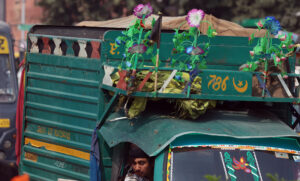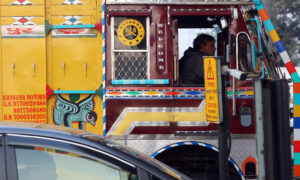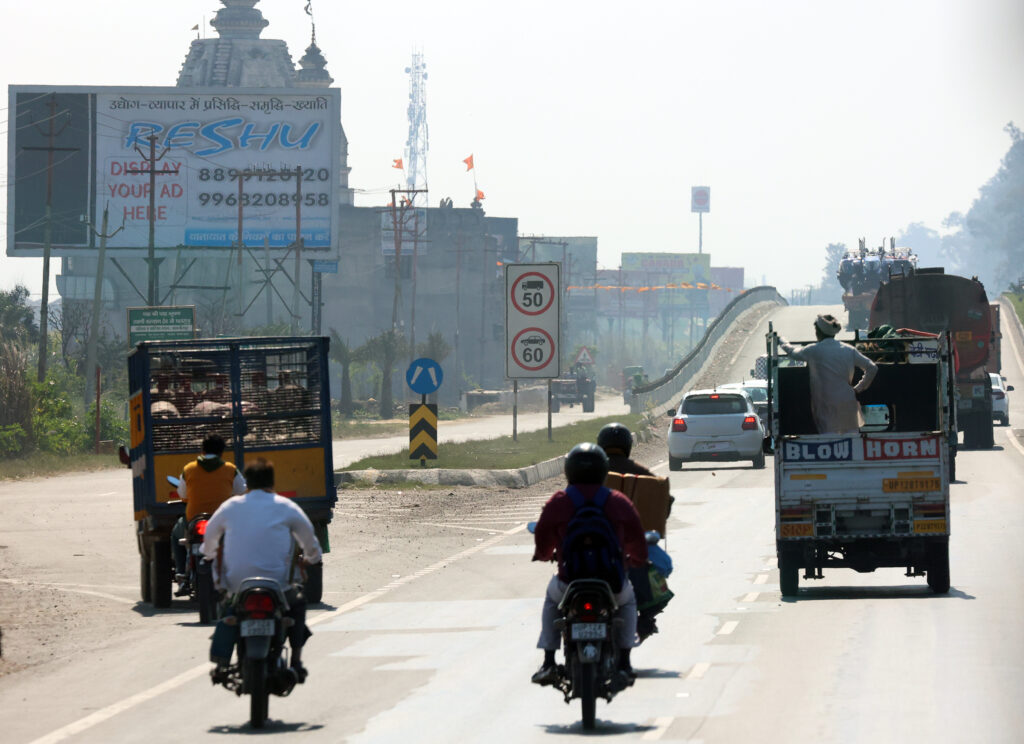

Today, in our more than eight hour drive to Agra from Haridwar, I found myself looking outside the window to the passing Indian freeway. I imagine anyone reading this who has traveled eight hours in one sitting before would know, you get bored. Then the question arises, how do you keep yourself entertained when time seems to come to a halt? I had attempted to solve this problem before, on our initial five hour drive to Haridwar, by trying to spot the moped scooter with the most people on it. This kept me enthralled for a solid 15 minutes, as I observed the number of persons on these scooters slowly increase, until I finally reached my India all time record of seven persons per one scooter! Far from the Guinness world record of 58 people on a moving motorcycle, but still quite an impressive feat on a motorbike only made to seat two.
So, as I observed out the window on this eight hour ride, looking upon wooden cart fruit shops, with my eyes halfway open, and my back sore from hours of travel; suddenly a spark of an idea floated into my brain, that would soon turn into a full blown inferno. This spark came from a seemingly innocuous object we had seen everywhere we drove this entire trip, the beauty and opulence of Indian delivery trucks.

With my interest peaked, questions started to flood my head with the power of a monsoon, why decorate these trucks? Does the style of illustration and decoration differ from state to state or driver to driver? Does the art serve a purpose beyond decoration? Are there professional truck Picasso’s? But most importantly, what can we take away and bring into our own daily lives from these humble trucks and drivers? These were questions that, in my opinion, must be answered! So with nothing but a phone, notebook and a burning desire to learn more, I began my curiosity driven exploration into the wold of Indian trucking
So how did this all start?
It all started in the 1920s in British occupied India, with the importation of British military trucks. These trucks carried a variety of cargo, from weapons to people, but the cargo essential to the beginning of truck painting is kerosene. These trucks carrying highly flammable substances would have the words “Horn Please” written on the back, graciously asking whoever was driving behind them to sound their horn while passing the truck. Soon phrases from origins in driver safety, such as “Horn Please” and “Use Dipper At Night” became commonplace on trucks in India, and are still seen today. In the 1940s, companies began to paint trucks with company iconography, and logos, as an attempt to advertise their business. Shantanu Suman, a graphic designer and filmmaker who created the 2013 film “Horn Please”, in a interview with CNN travel had this to say about the state of advertisement on Indian trucks: “Imagine the truck is like a moving billboard. It travels from one side of the country to the other, carrying the message of the truck driver and owner.” And, “A better looking truck attracts more business.”
How does the art vary from region to region?

Each state of India has its own unique truck art scene. For instance, there is a style divide between Northern and Southern India, the South keeping a more conservative approach to motorized mosaics by maintaining minimalism, keeping plain interiors and exteriors. Opposed to the Northern Indian scene which embraces the opulence with large hand painted scenes and hanging tassels from the front of each truck. For example, the truck that flicked the metaphorical “light switch” in my head, had a cartoon painted rendition of the Taj Mahal on the rear gate of the truck, from the maximalist design and myself, being in Northern India.
All creeds and colors drive these trucks, so a large range of religious iconography is often painted by drivers to emphasize who is behind the wheel, symbols such as the mother and calf, star and sickle, cross, Om and many more! These small accoutrements can help drivers who spend 10 months out of the year working away from their loved ones feel like they are home away from home..
What can we take away from these motorized Michelangelo’s and Michelangela’s? Besides curing my boredom, and giving me design inspiration for my car back at home, these drivers and their noble motorized steeds serve as a reminder that we can add color and joy to the seemly mundane parts of our lives and just because you have to work doesn’t mean that you can’t make every moment your own. That artistic self expression is not limited to “Creative careers” and that everyone, no matter the occupation can benefit and express joy by showing who they are.

You must be logged in to post a comment.